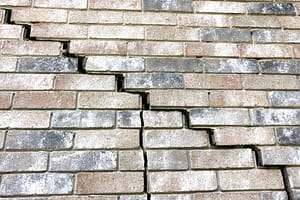Top Guidelines Of Best Basement Waterproofing
Top Guidelines Of Best Basement Waterproofing
Blog Article
Best Basement Waterproofing Can Be Fun For Everyone
Table of ContentsThe Single Strategy To Use For Best Basement WaterproofingBest Basement Waterproofing - The FactsExamine This Report on Best Basement WaterproofingThe Facts About Best Basement Waterproofing RevealedWhat Does Best Basement Waterproofing Do?
uses excavation methods toward the base of the structure's foundation. involves removing moisture after it has actually entered the basement. AdvantaClean's trained experts and specialists will certainly locate the water source. If wall surface or slab cracks exist, we will certainly inject polyurethane and epoxies right into the cracks and secure the compromise, protecting against additional moisture from getting in.If there's condensation on the exterior of the foil, you have high humidity in your cellar. Repair it with a portable room dehumidifier or a whole-house humidifier system rather of waterproofing items. If the foil has condensation on the inside surface (alongside the wall), the soil around your home may be normally damp from a high water table or bad soil drain.
You can waterproof simply your indoor wall surfaces, which might address the issue. Once they dry, they stick permanently to concrete and stonework wall surfaces.
Top Guidelines Of Best Basement Waterproofing
Concrete water-proof coverings can not be applied to previously repainted surfaces; inspect the tag. Known as densifiers, they are ideal only for walls that haven't been repainted or secured.
You clean, roll, or spray it on much even more thickly one gallon covers just 75 square feet, not the 300 square feet normal with standard paint. Water-proof paint is fine for DIY application. You can use it over painted surfaces, and paint over it once it's cured (one gallon prices $37).
It can cost $10,000 to $15,000, depending upon the job needed. Exterior waterproofing involves digging deep into around the home to the complete deepness of the structure wall surfaces, then setting up a waterproof coating or membrane topped by drain panels. The panels provide a very easy course for water to stream to an exterior French drain at the end of your structure.
A basement without waterproofing is kind of like that. Your basement doesn't desire to go through a downpour without proper protection simply as much as you don't desire to.
Best Basement Waterproofing Fundamentals Explained
But if you've done your research, you would certainly understand there are 2 kinds of waterproofing: inside and outside. It can obtain puzzling what they both mean, which one's a far better financial investment, and what will really maintain the water out. Don't stress, we put together this blog to conveniently define both methods for you and talk about the pros and cons of each.
Exterior waterproofing is a waterproofing approach that involves sealing your home from the outside. The structure walls are then cleaned, secured, and covered with a water resistant membrane or sealant.

Excitement About Best Basement Waterproofing
It's a much more involved process that needs digging up your yard, which is pricey and time-consuming. Outside waterproofing involves getting rid of every little thing surrounding your house, consisting of verandas, driveways, sidewalks, landscaping, a/c devices, decks, and more. If any of the job was done improperly and water is still entering your cellar, there isn't much you can do to correct or repair it.
Interior basement waterproofing entails waterproofing from the within. Any type of water that leakages into your cellar is redirected prior to it touches check my reference your flooring. It's type of like wearing a raincoat under your clothes. It entails two things: a water drain track and a sump pump. It works by securing the within your cellar walls and floors so water that attempts to go into is directed out via a sump pump.
It's an efficient method to waterproof your basement - Best Basement Waterproofing. The disadvantage of interior basement waterproofing primarily has to do with the installment process. This approach requires saved products, furniture, and integrated shelving or cabinets to be relocated from touching the cellar walls. And during setup, your cellar can not be used. The greatest difference in between the 2 approaches is this: Outside waterproofing is a preventative remedy and indoor waterproofing is a corrective remedy.
The Of Best Basement Waterproofing
Finally, click to read outside and indoor cellar waterproofing are both efficient approaches of protecting your home from water damages. Outside waterproofing creates an obstacle that stops water from entering your home, while interior waterproofing redirects water that does enter your home. And it is very important to keep in mind that outside waterproofing is a costly and disruptive installation procedure when compared to indoor waterproofing.
Whichever technique you select, make sure you choose a reputable and trustworthy specialist for the work. If you have any type of questions about basement waterproofing, please reach out to us.
You can fill out our type right here, start a chat in additional info the lower right-hand edge, or call us at 1-800-827-0702.
Report this page